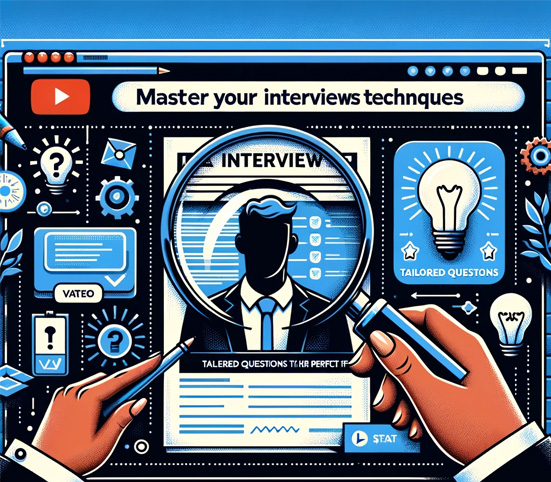Organizations are investing in AI transformation while missing the one strategic step that determines success or failure. According to Josh Bersin, leading industry analyst, the barrier isn’t the technology itself. “If there’s anything that’s going to hold you back in AI transformation,” Bersin says, “it’s not going to be the tech – it’s going to be [job redesign].”
Before you can answer questions about how AI will transform your workforce, you need to answer fundamental questions about the work itself. What outcomes need to be generated? How does each role connect to your growth strategy? What does success actually look like? Without clarity on these foundational questions, AI simply amplifies existing confusion. Companies that effectively eliminate some jobs while changing and creating others are “much, much, much more profitable” – yet most organizations are implementing AI without first rethinking what work needs to exist, who should do it, and how roles should be strategically defined.
If there’s anything that’s going to hold you back in AI transformation, it’s not going to be the tech – it’s going to be [job redesign].
Josh Bersin, Industry Analyst
Why Job Redesign Matters for Scaling Companies
While 92% of CEOs report they’re heavily investing in AI, only 7% are actually generating new revenue through the technology. Research shows that only one in three AI initiatives boost productivity, and just one in five delivers measurable ROI.
For scaling companies and mid-sized organizations, these odds are particularly concerning. When resources are limited and every investment must deliver returns, you can’t afford to implement AI on top of poorly defined processes and unclear role expectations. The gap between investment and return isn’t about the sophistication of the AI tools – it’s about people, culture, and readiness. More specifically, it’s about whether you’ve done the foundational work of defining what work needs to exist and how success will be measured.
The Real Bottleneck: Strategic Role Design
The critical constraint in AI transformation is job redesign – the strategic work of determining which jobs should be eliminated, which should be fundamentally changed, and which new roles need to be created. This isn’t an administrative exercise in updating job descriptions. It’s a strategic imperative that requires managers to think deeply about how roles fit organizational strategy, what specific outcomes each position needs to generate, and how success will be measured.
For growing companies, getting this wrong has immediate consequences. When one financial services firm automated a process without thinking through talent implications, they eliminated all entry-level roles in that function. Only later did leadership ask: Where would the next set of experts come from?
This illustrates what researchers call “ripple effects” – the unintended consequences that occur when organizations ask “Can a machine do this?” without also asking “What are the implications if it does?” In a company of 500-1000 employees, or a Series A startup scaling rapidly, these ripple effects can derail growth plans and create gaps in critical capabilities.
Companies that get job redesign right don’t just implement AI more successfully. They build talent pipelines that sustain expertise, create clearer pathways for employee development, and establish the foundation for sustainable growth.
From Task Lists to Outcome Definition
Traditional job descriptions focus on tasks and activities – listing what someone will do on a daily basis. But in an AI-enabled workplace, many of those tasks will be handled by technology. What matters is defining the outcomes that need to be generated, the strategic thinking required, and the specifically human capabilities that drive value.
For HR leaders in growing organizations, this shift is both opportunity and challenge. You’re already stretched thin managing rapid hiring, onboarding, and culture-building. Adding “redesign every role” to the list feels impossible. But here’s the reality: you’re already redesigning roles – you’re just doing it reactively, one painful hiring mistake at a time, rather than proactively and strategically.
Every time you hire someone who doesn’t work out, you’re essentially discovering that the role wasn’t clearly defined. Every time a new employee struggles to understand what success looks like, you’re paying the price of unclear outcome definition. Every time a manager can’t articulate what they need from a position, you’re experiencing the cost of skipping strategic role design.
The question isn’t whether to invest time in role design. It’s whether to invest that time up front – creating clarity that makes everything else work better – or pay a much higher price downstream through poor hires, longer time-to-productivity, and unclear performance expectations.
Practical Steps for Scaling Organizations
Strategic role design doesn’t require massive consulting engagements or enterprise-scale initiatives. It requires discipline around several key questions for every role:
Connect to Strategy: How does this role directly contribute to our growth objectives? What happens to our ability to scale if this role doesn’t perform?
Define Outcomes: What specific results must this person generate? Not what tasks they’ll do, but what they’ll accomplish and how we’ll measure it.
Establish Success Measures: What does great performance look like in the first 90 days? The first year? How will we know objectively whether someone is succeeding?
Clarify the Blueprint: What capabilities, approaches, and ways of working will this person need to deliver these outcomes in our specific environment?
When managers work through these questions systematically, something shifts. They stop thinking about filling a seat and start thinking about designing for impact. They move from “I need a marketing manager” to “I need someone who will generate qualified pipeline through our specific channels, measured by SQL conversion rates, with demonstrated capability in our market segment.”
This clarity transforms everything downstream. Recruiting becomes more targeted. Interviews focus on relevant capabilities. Onboarding accelerates because expectations are clear. Performance management becomes more objective. And critically, you’ve created the foundation that makes AI tools actually work – because you’re feeding them clear, strategically designed role requirements rather than vague task lists.
Building Sustainable Growth
For CEOs of scaling companies, job redesign isn’t just about AI readiness – it’s about building an organization that can grow efficiently. Clear role design means faster hiring, reduced turnover, and employees who reach productivity faster because they understand what success looks like.
For HR leaders in mid-sized companies, strategic role design provides the leverage you need. Rather than constantly reacting to hiring needs and performance issues, you create a framework that makes everything work better – from talent acquisition through performance management.
The companies seeing the greatest returns from AI aren’t necessarily those with the most advanced technology. They’re the ones who’ve recognized that AI amplifies whatever you put into it. Clear, strategically designed roles lead to better outcomes. Unclear, task-focused role definitions lead to expensive failures.
Conclusion
AI transformation’s success doesn’t hinge on having the most advanced technology. It depends on building that technology on a foundation of strategically designed roles that clearly articulate what outcomes need to be generated and how success will be measured. Organizations that recognize job redesign as the critical constraint – not an administrative burden but a strategic imperative – won’t just implement AI more effectively. They’ll build stronger teams, develop more capable leaders, and create the clarity that drives sustainable growth.
PropulsionAI addresses this challenge by guiding managers through strategic role design in as little as 15 minutes. Through thoughtful questions and dynamic interaction, the platform helps managers define how roles connect to strategy, what outcomes need to be generated, and the specific success measures that will be used. The result isn’t just a job description – it’s a comprehensive blueprint that makes every downstream activity more effective.
Ready to transform your approach to role design? Try PropulsionAI 100% free
Want More?
- “The Performance Management Revolution” – Peter Cappelli and Anna Tavis on Harvard Business Review (link)
- “Help your employees find purpose – or watch them leave” – McKinsey & Company (link)
- “5 insights on the real impact of AI transformation, from Josh Bersin” – HR Executive (link)




